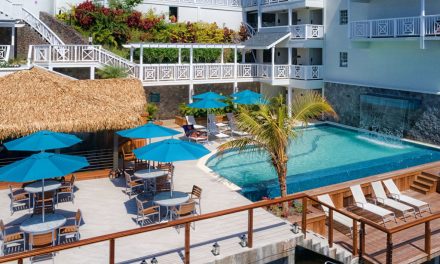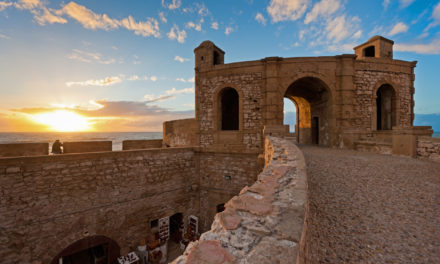Ecotourism is a form of tourism that aims to promote the conservation of natural areas and support local communities. It is often marketed as a sustainable alternative to traditional mass tourism and can involve activities such as hiking, birdwatching, and visiting indigenous communities. In this article, we will explore whether ecotourism can help protect the Amazon rainforest, one of the world’s most biodiverse and important ecosystems.
The Amazon rainforest, located in South America, is home to an estimated 400 billion trees and tens of thousands of species of plants and animals. It is also an important source of livelihood for millions of people, including indigenous communities. However, the Amazon rainforest is facing significant threats, including deforestation, illegal logging, and climate change.
One of the arguments in favor of ecotourism as a means of protecting the Amazon rainforest is that it can provide an alternative source of income for local communities, reducing their reliance on activities such as logging and farming that can damage the forest. By supporting local businesses and hiring local guides, ecotourism can also help to promote cultural exchange and understanding, potentially reducing the likelihood of conflict between indigenous communities and outsiders.
Ecotourism can also help to raise awareness about the importance of the Amazon rainforest and the threats it faces. By bringing visitors to the region and providing them with educational materials and experiences, ecotourism can help to educate people about the value of the forest and encourage them to support conservation efforts.
However, it is important to note that ecotourism is not a silver bullet for protecting the Amazon rainforest. For ecotourism to be truly effective, it must be well-managed and carefully planned to minimise its impact on the environment. This can include measures such as using low-impact transportation, minimising waste, and ensuring that the money generated by ecotourism is reinvested in the local community and used for conservation efforts.
In addition, ecotourism alone is not sufficient to address the complex and multifaceted threats facing the Amazon rainforest. To truly protect this vital ecosystem, a combination of approaches is needed, including policy changes, enforcement of existing laws, and efforts to reduce greenhouse gas emissions.
Ecotourism has the potential to be a useful tool for protecting the Amazon rainforest, but it must be carefully managed and implemented as part of a broader strategy. By supporting local communities, raising awareness, and minimising environmental impacts, ecotourism can help to protect this vital ecosystem and the many species and people who depend on it.
There are also potential negative impacts of ecotourism that must be considered. If not well-managed, ecotourism can contribute to overcrowding and pollution in sensitive areas, and can also lead to conflicts with local communities if the benefits of tourism are not fairly distributed. In addition, some critics argue that ecotourism can be used as a cover for other, more harmful activities, such as logging or mining, or that it can lead to the commodification of nature and cultural practices.
To ensure that ecotourism is truly beneficial for the Amazon rainforest and its communities, it is important to adopt best practices and follow guidelines such as those provided by the International Ecotourism Society (TIES). This includes involving local communities in the planning and management of ecotourism initiatives, ensuring that the benefits of tourism are shared equitably, and using low-impact transportation and accommodation.
It is also essential to work with local organisations and communities to ensure that ecotourism is integrated into broader conservation efforts and that the needs and priorities of these groups are taken into account. By building strong partnerships and working together, it is possible to create ecotourism initiatives that support the conservation of the Amazon rainforest while also benefiting local communities and promoting cultural exchange.
In summary, ecotourism can be an effective tool for protecting the Amazon rainforest, but it is important to approach it with caution and to ensure that it is well-managed and integrated into broader conservation efforts. By following best practices and working closely with local communities, it is possible to create ecotourism initiatives that support the conservation of this vital ecosystem while also benefiting local communities and promoting cultural exchange.
There are also a number of organisations and initiatives working to promote sustainable ecotourism in the Amazon rainforest. For example, the Amazon Ecotourism Project, launched by the Rainforest Foundation UK in 2004, aims to promote sustainable tourism initiatives in the Amazon region that support the conservation of the forest and benefit local communities.
Another example is the Amazon Environmental Research Institute (IPAM), which works to protect the Amazon rainforest through a range of initiatives, including research, education, and policy advocacy. IPAM also works with local communities and organisations to promote sustainable development and ecotourism initiatives in the region.
There are also a number of responsible tourism companies that offer ecotourism experiences in the Amazon rainforest. These companies often work with local communities and organisations to support conservation efforts and promote sustainable development in the region.
While ecotourism can be a useful tool for protecting the Amazon rainforest, it is important to approach it with caution and ensure that it is well-managed and integrated into broader conservation efforts. By working with local communities and organisations, supporting responsible tourism companies, and following best practices, it is possible to create ecotourism initiatives that benefit both the forest and its communities.










